Practice Of Targeting of Electricity Transmission Infrastructure With Fixed-Wing Strike Drones Reaches Sudanese Civil War
🇸🇩
On 9 September 2025, a group allied with Sudan’s paramilitary Rapid Support Forces (RSF) claimed responsibility for a propeller-driven strike drone attack against a series of targets in the Khartoum metropolitan area. The intended targets are reported to have included an airbase, an oil refinery, an electric substation, and an armaments factory. The Rapid Support Forces is one of the two main belligerents in the Sudanese Civil War (2023-present) and has the Sudanese Armed Forces, which now control the devastated capital city of Khartoum, as its primary opponent. While long-range attacks involving propeller-driven fixed-wing strike drones have lost much of their novelty in recent years, even in the specific context of the Sudanese Civil War, it is nevertheless remarkable how readily belligerents in conflicts worldwide have—through their foreign patrons—acquired long-range strike capabilities of a type that were previously monopolized by the largest and best-resourced militaries.
Whereas airbases, oil refineries, and the likes of armaments factories tend to be sprawling targets, specific nodes of electricity transmission equipment amount to fairly compact targets. Attacking such fairly compact targets requires strike munitions that are precise and accurate. As the following images and video show, the four propeller-driven fixed-wing strike drones that the Rapid Support Forces is reported to have employed to attack the al-Markhiyat substation in Omdurman displayed decent but imperfect accuracy and precision—note the large hole in the concrete wall that separates the transformers, which is unlikely to have been the intended target.
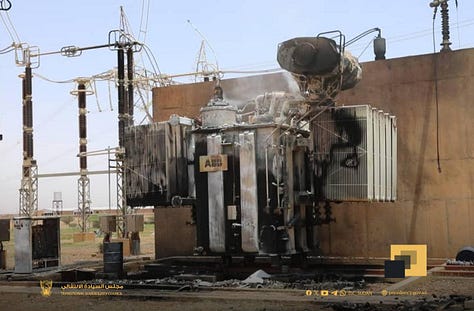
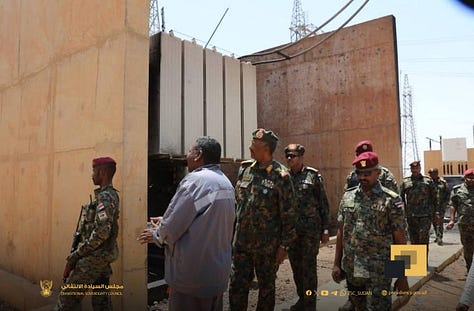
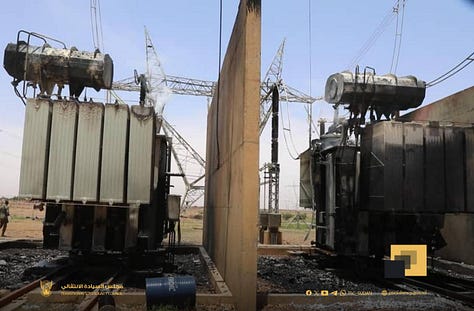
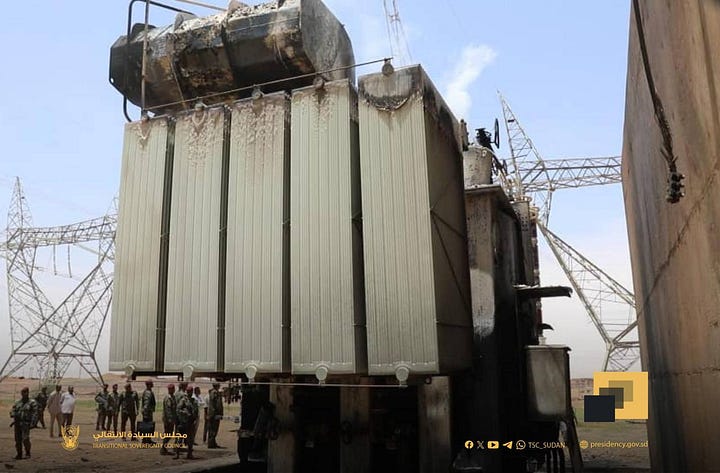
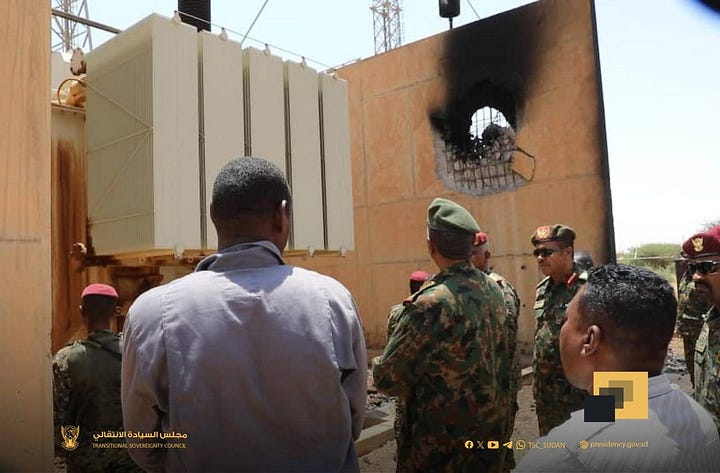
The destructive effects and effectiveness of a given munition are a function of the destructive radius of the munition against a given target type. Leaving aside nuclear weapons, the destructive radius of a munition is generally related to the amount of high explosives of a given type that is present in the warhead. As a result, strike munitions with a larger and heavier warhead will, all else being equal, have a larger destructive radius than strike munitions with a smaller and lighter warhead. Given this, strike munitions with smaller and lighter warheads must compensate for the lesser destructive radius with greater accuracy and precision.
Propeller-driven strike drones are typically designed and built to a low price point. As a result, these can be procured, fielded, and employed in very large numbers, which, in turn, allows militaries, paramilitaries, and non-state armed groups to attack what were, until recently, unimaginably expansive and deep target banks. There tends to be a tradeoff that even accurate and precise impacts against many types of targets will typically damage, not wholly destroy, the intended target. All else being equal, if you want to damage a power plant beyond economic repair or beyond practical repair, let alone to wholly destroy it—raze the structure(s)—you will need a larger and heavier warhead and, in turn, a larger, heavier, and more expensive strike munition that is more difficult to access and likely to be available in much smaller numbers. While it is possible to use multiple strike munitions to compensate for the limited payload of a single given strike munition, this typically places greater demands on weaponeering and accuracy. As of 2025, lower-cost long-range strike munitions such as propeller-driven strike drones tend to be far better suited toward harassment strikes than wholesale destruction and, therefore, appear to be better suited in, for example, protracting the Sudanese Civil War than bringing it to a quick conclusion.
While long-range attacks tend to receive a lot of attention, it is important to recognize that improving the accuracy and precision of a strike munition becomes an increasingly challenging proposition once intensifying measure-countermeasure dynamics take effect. It also tends to result in more complex and more expensive strike munitions that will, all else being equal, be available in more limited numbers. The Rapid Support Forces and the Sudanese Armed Forces are well behind the “state of the art” of strike munition designs and countermeasures thereto seen in the Russia-Ukraine War. It is also important to recognize that the Russia-Ukraine War is, in itself, something of a technological backwater as far as the worldwide/system-level technological frontier is concerned (the Russia-Ukraine War does, however, offer many examples of conceptual innovation and, above all, regular and large-scale demonstrations of real-world effects and effectiveness). While the net effects of the diffusion of propeller-driven fixed-wing strike drone technology to Sudan on the course of the country’s civil war remain to be seen, it is safe to say that this area of military technology is likely to shape interstate and intrastate conflicts alike going forward.

